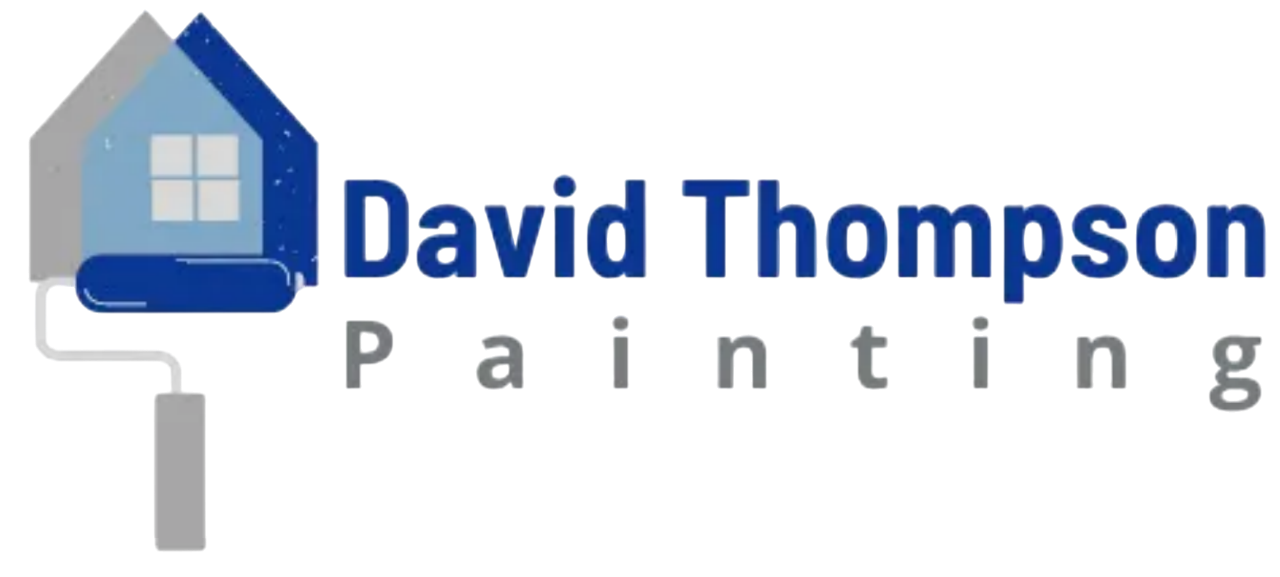CALL US TODAY AT 859-314-0531
david thompson painting
ABout us
TOP-RATED richmond PAINTER
ABOUT david thompson painting
At David Thompson Painting, we understand that paint, siding, and gutters are more than just decorative elements; they play crucial roles in safeguarding both residential and commercial properties. Our dedicated team is committed to delivering solutions that enhance and protect properties inside and out.
Since our establishment in 2013, we have proudly served countless homeowners and businesses in Richmond, as well as the surrounding areas, including Richmond, Lexington, Winchester, and Berea. When it comes to painters and siding contractors, you won't find a more reliable choice. If you're ready to discuss your project with an expert and receive a free estimate, don't hesitate to contact us.
Expanding Our Reach to Serve You Better
Customer satisfaction is one of our key goals when we take on any painting project. For the homeowners we work with, we know that it can be inconvenient to have painters in and out of your property, whether it's only a day or a lengthy time period. We do our best to cause minimal interruption in your schedule while ensuring that the results look great. We work closely with you on scheduling and will communicate with you should anything change.
We are proud to offer our services across a broad range of areas. Our commitment to quality workmanship and customer satisfaction drives us to deliver the best service possible, no matter where you are located.
- Richmond
- Lexington
- Winchester
- Berea
- Waco
Every location we serve upholds the exceptional quality and customer service that define our brand. From the initial consultation to the final brushstroke, our team ensures a smooth, hassle-free experience that exceeds your expectations, transforming your space into a vibrant reflection of your vision. We consistently maintain these high standards, making sure each client feels valued throughout the process.
FREQUENTLY ASKED QUESTIONS
Paints
-
Should I choose oil or latex paint to paint my house?
Oil-based paints used to be the standard for surfaces that may mold or mildew such as exteriors and bathrooms. Oil-based paints should only be applied in temperatures above 50 degrees Fahrenheit. However, David Thompson Painting recommends considering latex paint for your next project. Recent advances in latex paint and primer combinations are as durable as oil paint and can be applied in temperatures above 35 degrees Fahrenheit. Many manufacturers are discontinuing the production of oil-based paint. Homeowners who choose oil-based paint may find it difficult to update in the future.
-
Is there a difference between hand-brushed and sprayed paint?
David Thompson Painting most often uses spraying to create a "no brush stroke," flawless satin finish that looks very nice on surfaces such as new cabinets. Hand brushing a new color may not give you the complete, even coverage you are looking for on high end surfaces. A spray gun will give you full coverage and a more even coating for your new paint color. Save hand brushing for updating trim and molding. Spraying paint is impractical for interior walls and using a roller brush is more appropriate.
-
What does VOC mean?
VOC stands for volatile organic compounds. High VOC are found in some paints. At David Thompson Painting we don't recommend the use of high VOC paints on interior surfaces. They have a strong and unpleasant chemical smell. Volatile organic compounds in paints, varnishes, adhesives and other products are still common but no longer necessary due to advances in the production of house paint. Walls and other surfaces coated in high VOC paint will give off gas chemicals into the air that can cause indoor air quality and health problems. Most interior paint manufacturers strive to produce low VOC paint. Low VOC paints are high quality and provide excellent coverage.
-
Are more expensive paints better?
Yes. High quality paint colors are richer and more vivid. At David Thompson Painting we recommend high quality paint because it is less likely to fade from UV light exposure. Premium quality paint produces better results and requires fewer coats.
-
Does all the existing old paint on my house need to be removed before it can be repainted?
No, if the existing paint is in good condition, with small spots, stains, and limited damage, you can repaint the walls without removing all of the existing paint. However priming first is always recommended to make sure the old color does not bleed through to the new color. Paint that is pealing and cracking should be scraped away. Holes and imperfections in the wall surface should be patched and sanded.
-
Does my whole house need to be primed before being painted?
For better results, prime your home's walls before painting. That is especially true if the old paint color is remarkably different than the new paint color. Areas of the wall that have been patched and sanded should be primed first before painting.
-
What is elastomeric paint?
Elastomeric paint is designed to protect masonry surfaces. These coatings help protect your stucco or brick from wind driven rain to create a waterproof system.
-
How long does it take for new paint to dry?
Latex paint dries in about 4 hours. Oil-based paint dries in 6 to 8 hours. You should allow paint to completely dry before applying a second coat. Paint that is sticky to the touch after 24 hours is defective and requires priming or removal before you paint over it.
Concrete Staining
-
What must be done before applying any concrete stain?
Here are the main steps that need to be taken before applying concrete stain:
- Strip and remove all previous sealers, paints, adhesives and coatings.
- Clean the surface thoroughly.
- For acid concrete stain, use a concrete etch and cleaner to prepare the surface and rinse well. Do not use muriatic acid to clean. It will destroy minerals which produce the color range of the stain selected.
- For water-based stain use dish soap and water to clean the surface. Degreaser and neutralizer diluted in a 4 to 1 ratio is ideal for removing oil spots.
- Finally rinse the concrete well.
- If the concrete surfaces are so smooth or dense that it does not allow water to soak in it will require mechanical sanding to rough up the surface so it can receive the stain.
-
Which lasts longer concrete stain or paint?
One of the greatest advantages of choosing stain over paint is that the stain penetrates concrete unlike paint that only covers the surface. As a result, concrete stain last longer than concrete paint.
Trim and Molding Painting
-
What type of paint should be used on trim and molding?
Semi-gloss paint is usually the best choice for trim and molding. Semi-gloss has a higher gloss level than a satin finish but isn't as shiny as high gloss. High gloss paint can be a good choice for trim areas that are washed often or in a high moisture environment like a bathroom.
-
How do the pros paint trim? Should trim be sanded before repainting?
If the trim is new or already smooth, lightly sand it using 120 grit sandpaper before painting. If the trim is pitted or rough, start by sanding the trim with coarse, 80-grit sandpaper and graduate to a finer 120 grit sandpaper. You do not need to remove all the old paint before applying new paint.
Metal Awning Painting
-
What kind of paint do you use on metal awnings?
Use an oil-based paint over a premium primer. We suggest using two coats of paint. You'll want to wait until the first coat of paint is completely dry to the touch before applying the second coat of paint.
-
What is the best primer for an outdoor metal awning?
A premium primer designed for painting metal such as Rust-Oleum is the best choice for an outdoor metal awning. After gently sanding the metal surface with a 180-grit sandpaper apply the primer with a few thin coats. Allow each primer coat to dry completely before applying the next coat.
-
How do you prepare a metal awning for painting?
After detaching, use a wire brush to remove stubborn dirt and areas where the metal has corroded. Patch any small holes with a metal patching compound such as Alvin metal repair putty. Allow the putty to fully cure before proceeding. Once the putty is dry, lightly sand the entire surface with 180 grit sandpaper. Use a rust treatment or other metal cleaner made to treat rust to thoroughly clean the surface. Then your metal awning is ready for painting.
Brick Waterproofing
-
What is the best way to waterproof brick?
First, thoroughly pressure wash the entire brick area you want to seal. Allow the brick to dry completely before sealing it.
Select the type of sealant you would like to use. Sealants come in three categories - paint, surface sealers and penetrating sealers. Paint is the least expensive. However, because it covers the brick completely in an opaque layer of paint it does not allow the natural brick to show through. Paint does not last as long as a surface sealant or penetrating sealant and will require regular maintenance like any exterior house paint.
A surface sealant is more expensive than paint but dries clear, lasts longer and requires less updating. Surface sealants do not soak into the porous brick surface. A penetrating sealant is the most expensive option. These sealants are specifically formulated to soak deep into the porous surface of your brick home. Penetrating sealants can dry clear. Penetrating sealants require less maintenance and can last up to 30 years. If you choose a penetrating sealant or surface sealant, be sure to select a brand that allows the brick to "breathe" or moisture can become trapped and cause damage to your home.
Apartment Painting
-
What questions should I ask an apartment painting company?
If you are planning to paint your apartments make sure to ask your painting contractor these important questions.
- Do you have references from other apartment complexes you have painted?
- Can you provide an itemized estimate?
- What is the schedule for my job?
- Do you carry insurance?
- Are you a licensed contractor in my state?
- What prep work will you do?
- What quality of paint will you use?
- Do you offer a warranty in writing?
-
What factors affect the estimate for painting an apartment?
Many things can affect a painting estimate but consider these factors when discussing your project with your painting contractor.
- Surfaces and finishes
- Prep work, repairs or patching needed
- Quality of the paint
- The number of coats needed for proper coverage
- Specialty equipment or processes needed
- Timeline to complete your painting project
- Size of your painting project
Wallpaper Removal
-
What is the trick to removing wallpaper?
The trick to removing wallpaper is lightly moistening the paper using a spray bottle or damp sponge. Fill the spray bottle with hot water and a small amount of fabric softener (about 1/4 cup of fabric softener per gallon of hot water). Lightly saturate one section of the wallpaper at a time starting at the top left and working your way down.
-
What are the issues with removing wallpaper?
Removing wallpaper is time consuming, messy and requires patience. Most removal processes require steam or a damp sponge. If you use too much water, it can damage the underlying sheet rock. When you begin to peel the wallpaper away from the wall it may come off in tiny strips. Keep a trash bag handy and dispose of the wallpaper as you go. Discarded slightly damp pieces of wallpaper can easily adhere to other surfaces. It is easy to create nicks and holes in the underlying sheet rock when removing wallpaper. An extensive amount of patch and repair work may be needed to prepare the walls for painting.
Front Door
-
What color should you not paint your front door?
For many years homeowners were advised to avoid orange paint on their front door. Orange faded quickly and was hard to retouch and maintain. However, with new advancements in paint technology fading and matching any color of paint is no longer a problem. Homeowners should feel free to choose any color of paint they like.
Epoxy Flooring
-
What are the benefits and problems with epoxy floor coating?
On the plus side, epoxy floor coatings are economical, resist damage and are easy to maintain. Epoxy is also chemical resistant, which is why it is popular for garage floors. Some people see the following as the negatives:
- Epoxy floors do not muffle walking and contact noise.
- The epoxy coating feels cold like a tile floor under foot.
- Epoxy floors do not offer any non-fatiguing benefits.
- Imperfections in the underlying floor may look like ripples once epoxy paint has been applied.
-
When should you not epoxy a garage floor?
Epoxy can have adhesion problems. The epoxy coating doesn't adhere well in very cold temperatures or in humid and high moisture areas like a basement or bathroom. If adhesion is poor the epoxy coating will crack and peel.
-
How long does an epoxy garage floor last vs. painted concrete?
An epoxy floor painted to the correct thickness will last between 10 and 20 years and require minimal maintenance. A painted concrete floor may chip and peel quickly especially in high traffic areas. That can often result in the need for yearly touch ups.
Cabinet Painting
-
Do you paint the inside of cabinets when refinishing?
Painting the inside of your cabinets helps protect them from wear and tear. A good paint job can seal the wood and protect your cabinets from damage. At David Thompson Painting we recommend allowing the interior of cabinets to dry completely with the cabinet doors off between coats. Allow at least 48 hrs. before placing items back into the cabinet. Painting the interior of your cabinets can add an extra pop of color to your kitchen.
-
What is the difference between cabinet painting and cabinet refinishing?
Cabinet refinishing and repainting are the same thing. Cabinet refinishing includes sanding and all the prep work needed before painting. Cabinet painting should include the same prep work, but it is best to clarify this point with your painting contractor. Cabinet refinishing is often confused with cabinet resurfacing which includes replacing the cabinet doors and drawer fronts with new ones.
-
How do you get the smoothest finish when painting cabinets?
Sand, prep, and prime cabinets before spraying paint to remove any imperfections from the cabinet. In between each coat of paint, gently sand your cabinets using 300-400 grit sandpaper. Sandpaper will knock down any marks to give you a super smooth surface to work with. Allow 48 hours to dry before lightly buffing the cabinet doors with 0000 steel wool.
-
Is it better to spray or roll brush cabinets?
For kitchen cabinets, spray painting cabinets create a more flawless finish than painting with a roller brush. However, spray painting cabinets is more expensive. A roller brush made specifically for cabinet painting will always leave a slight texture on your cabinets but is a more affordable process.
Painting Drywall
-
What's the best approach for patching small holes in drywall?
First, sand or scrape the edges of the hole so patching material will stick correctly and create a smooth surface. Use a drywall patch kit to repair small holes. Cut the provided mesh adhesive strip so that it is slightly larger than the hole and press it over the hole with even pressure. Smooth the joint compound with the putty knife, feathering the edges so it blends with the wall. Let the spackle dry about 24 hours. Finally, you can sand that area smooth and paint the wall.
-
What do you do before painting drywall?
First, patch and repair any holes. Next, prime the dry wall before painting. It is not a good idea to put paint directly on unprimed drywall. Finally, wipe away any dust. Now it is ready for paint.
-
What happens if you don't prime new drywall before painting?
Failing to prime your drywall before painting can create the look of a patchy and uneven finish. The paint may also peel when exposed to humidity.
-
How many layers of paint do you need for new drywall?
After the seams are taped and finished, we recommend applying two coats of premium paint to create an even finish.
Textured Wall Spraying
-
What types of spray texture are there?
A spray texture application adds visual interest and physical texture to a wall. There are three categories of spray texture.
- Popcorn
- Orange Peel
- Sand
-
When should canned spray texture be used?
You can use a canned spray texture to repair small areas of drywall surfaces. Spray cans make it easy to blend the repair area with the surrounding texture.
-
How much pressure is required to properly spray texture a wall?
For small patches use a spray texture can. For larger jobs use a system that provides a consistent, high continuous air supply at a lower pressure below 50 psi throughout the entire job.
-
How long after you spray texture should you wait to knock it down?
Wait 10 to 15 minutes after spraying. As soon as the sheen is gone from the first area you sprayed immediately begin dragging the knockdown knife in fluid overlapping movements over the surface.
Roof Coating
-
Why should I get my roof coated with a reflective coating?
Reflective roof coatings are most commonly used on commercial roofs. Reflective coatings for roofs save money on heating and cooling costs. They also create a protective barrier that makes your roof last longer. Reflective coatings shield the roof from UV rays (which cause chemical breakdowns) and help minimize erosion caused by the weather. The most common types of roof coatings are silicone, elastomeric and aluminum.
-
What kind of roofs can be coated?
Roof coating should only be done by a professional. There are four types of roofs that benefit from coating.
- TPO (thermoplastic polyolefin) is the most common roof material installed on commercial buildings today. A single-ply primer should be used first before coating the roof.
- Modified Bitumen is found on many commercial low slope roofs. It is an asphalt-based rolled-roofing material that performs great with a coating.
- EPDM (ethylene propylene diene terpolymer) is a completely synthetic rubber-based single-ply material found on many commercial buildings. EPDM roofs must be primed before coating.
- Both commercial and residential metal roofs may be coated. Extra coating must be applied to the seams, screws and penetrations to ensure moisture does not get trapped.
Deck Refinishing
-
How do you restore a badly weathered deck?
The most time-consuming part of refinishing an old, badly weathered deck is identifying and replacing broken and rotten wood. Once the deck is repaired, power wash your deck and allow it to dry completely before continuing. Next, strip areas with peeling paint or finish. You do not need to strip the entire deck unless you are changing the color. Sand your deck until it is smooth to the touch. Apply two coats of a high-quality premium stain or sealant. Allow each coat to dry completely before applying the next coat.
Popcorn Removal
-
How long does it take a professional to remove a popcorn ceiling?
Including the drying time when using a popcorn ceiling remover spray, it takes about 10 hours to remove a popcorn ceiling from a 25ft x 10ft room. Allow about 20 hrs. per 500 square feet to remove popcorn from the ceiling.
-
What comes after removing a popcorn ceiling?
Once the popcorn is entirely removed, it is time to patch, repair and sand any damage to the drywall. Bad drywall seams previously disguised by popcorn may need to be retaped. It is common to have multiple holes and gouges made during the removal process that need patching.
Textured Wall Painting
-
What finish is best for textured walls?
It is best to paint textured walls in a matte or eggshell finish paint. Paint with a gloss finish will make the texture look harsh and visually overpower your room decor. A matte paint will give it a more subtle look that blends with other features in the room. Matte paint will look best if it is applied with a "high-nap" or "fluffy" roller brush.
WHAT OUR CUSTOMERS SAY
We work hard to ensure that we exceed all customer expectations. With every painting project, we strive to be the best painters in Richmond, KY, and the surrounding area. But do not just take our word for it, read our reviews below and see what our customers have to say.
"He does awesome work on all he does, very dependable and honest. I've known him for along time and has always done some of the best work around"
Tommy G.
"I've used this company on two different occasions . He painted the inside of my home and it looks fabulous!!! So I then used him a second time . He painted a deck for me... and it was also fabulous!!! I would recommend them to anyone !"
Selina S.
"A professional that knows how to treat a customer, I'm grateful for all your hard work and dedication every little detail is perfect... Absolutely recommend you to my neighbors.."
Ron A.
"David Thompson Painting exceeded all my expectations! Their team was professional, punctual, and paid incredible attention to detail. They transformed my living room and exterior into a space I absolutely love. I highly recommend their services to anyone looking for top-notch quality and exceptional customer service!"
Sarah M.
"David & CJ did a wonderful job painting my great room ceiling, walls & trim. Highly recommend them. Very professional paint job & very easy to work with. Two great guys. Did such a good job had them come back & do my other hallway today. Thank you all again."
John L.
"Do excellent work, always on time. Like the fact they do what they say, not always like that nowadays."
Jerry R.
"Very professional, fantastic job!"
Michelle F.
"Hands down one of the best all around! Great person communicator and painter. Very reliable"
Travis C.
"Reliable and excellent work!!"
Laquata H.
Request A Service
Please submit the following form or call us at 859-314-0531 and we will get back to you promptly. We look forward to hearing from you!
Contact Us
Thank you for contacting us at David Thompson Painting.
We will get back to you as soon as possible.
Please try again later.
david thompson painting
Our Location
Call Us Today
Hours Of Operation
MONDAY - FRIDAY: 8:00 AM TO 8:00 PM
SATURDAY - SUNDAY: APPOINTMENT ONLY
Get Your Free Quotes Today!
The cost of painting is crucial in choosing a contractor. While some Richmond companies give only a "ballpark" estimate, we provide a comprehensive quote that includes both painting and materials. You can feel confident knowing the full cost of your project with us.
Best Painting, Richmond
Save more on painting services at David Thompson Painting! Ask any homeowner owner in Richmond who they recommend. Chances are they will tell you David Thompson Painting.
Explore
Contact Information
we are social
Business Hours
- Monday
- -
- Tuesday
- -
- Wednesday
- -
- Thursday
- -
- Friday
- -
- Saturday
- Appointment Only
- Sunday
- Appointment Only







